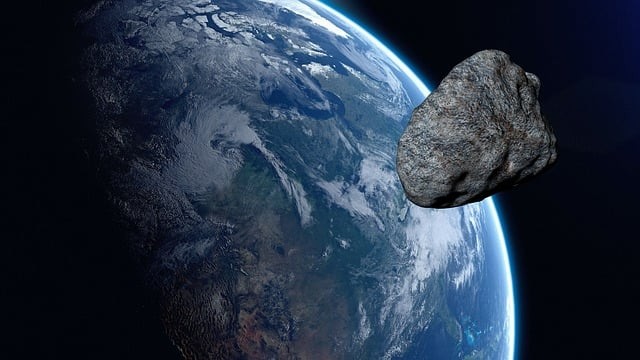The near-Earth object (NEO) 2023 MU2 is an asteroid detected recently and zoomed past Earth on June 25 at an astonishing speed of 2,000 miles per hour.
Despite its incredible velocity, astronomers were able to observe and track its movement. The discovery of MU2 was confirmed by the International Astronomical Union's Minor Planet Center only a week ago.

Stunning Footage Reveals House-Size Asteroid's Incredible Speed as Astronomers Track its Near-Earth Journey
Asteroid Raced Past Earth at an Impressive Speed
Astronomer Gianluca Masi utilized multiple telescope images to create a time-lapse depiction of the asteroid, known as 2023 MU2, which NASA estimates to have a diameter ranging from 13.5 to 30.1 feet (4.1 to 9.2 meters). The image vividly showcases the impressive speed of the asteroid, with background stars streaking past it.
Masi, operating the Celestron C14+Paramount ME+SBIG ST8-XME robotic unit as part of the Virtual Telescope Project, explained that the image was captured during a single 60-second exposure.
The telescope meticulously tracked the precise movements of 2023 MU2, resulting in a sharply defined point of light while the stars left trailing paths. Space.com reported that the asteroid 2023 MU2 had already begun moving away from Earth during the imaging session, reaching a distance of approximately 135,000 miles (217,000 kilometers) after the close flyby.
Fortunately, astronomers were able to observe the asteroid's passage without significant concerns. Discovered on June 16 and later confirmed by the International Astronomical Union Minor Planet Center on June 22, 2023 MU2 posed no threat of colliding with Earth.
The asteroid came relatively close, reaching a minimum distance of 134,000 miles (215,000 kilometers) from the planet at 7:19 p.m. EDT (2319 GMT) on June 25, which is approximately 60% closer than the average distance between Earth and the moon.
Despite unfavorable weather conditions in Italy, the Virtual Telescope Project successfully live-streamed the passage of 2023 MU2. Masi mentioned that they had to postpone the imaging session due to strong winds but eventually managed to capture the event.
READ ALSO: NASA Approves Near-Earth Object Space Telescope; Will It Improve Planetary Defense Efforts?
Near-Earth Object 2023 MU2 and Other Asteroids Flying Past Earth Soon
Asteroid 2023 MU2 is presently positioned within the constellation of Aries, according to The Sky Live. Its current Right Ascension is 02h 26m 27s, while the Declination is +13° 42' 30" as calculated for the specific location of Greenwich, United Kingdom. The magnitude of Asteroid 2023 MU2, according to JPL data, is currently measured at 22.07.
As of now, the distance between Earth and Asteroid (NEO) 2023 MU2 is approximately 449,487 kilometers, which is equivalent to 0.003005 Astronomical Units. It takes approximately 1.4993 seconds for light to travel from the asteroid to reach us.
Meanwhile, Hindustan Times reported that other asteroids that are set to fly past near Earth include asteroid 2023 MF1, asteroid 2023 MD, asteroid 2023 ME1, and asteroid 2023 MS2. Both asteroids 2023 MF1 and 2023 MD were scheduled to fly past Earth on June 25.
Asteroid 2023 MF1 is about 120 feet wide, traveling at 63, 986 kilometers per hour, and went as close as 1.2 million miles to Earth. Asteroid 2023 MD, on the other hand, is 90 feet wide and traveled at speeds of 14,825 kilometers per hour, and managed to come as close as 1.660 million miles to Earth.
The close approach of asteroid 2023 ME1, which is about 88 feet wide, happened on June 26 at an impressive speed and at a distance of 3.03 million miles from Earth. Lastly, asteroid 2023 MS2 will come close to Earth on June 27. This 120-foot-wide asteroid is expected to travel at 39,770 kilometers per hour at a distance of 2.36 million miles from Earth.
RELATED ARTICLE: Defunct Arecibo Telescope Finds At Least 70 Potentially Hazardous Near-Earth Objects, Asteroids
Check out more news and information on Space in Science Times.



![Earth's Quasi-Moon Kamo‘oalewa Could Originate From Lunar Surface Not Asteroid Belt [Study]](https://1721181113.rsc.cdn77.org/data/thumbs/full/53275/89/56/50/40/earths-quasi-moon-kamo-oalewa-could-originate-from-lunar-surface-not-asteroid-belt-study.png)










